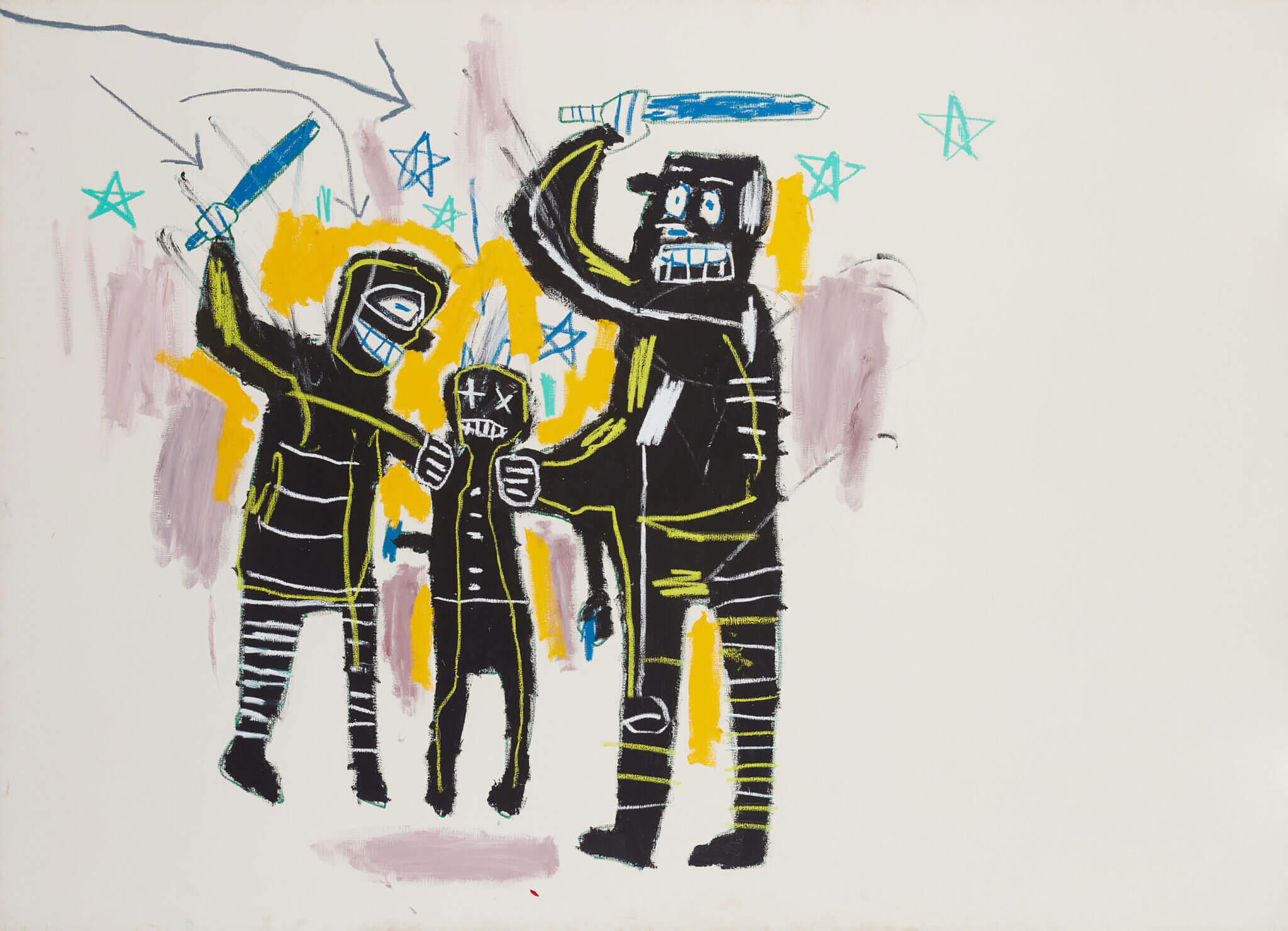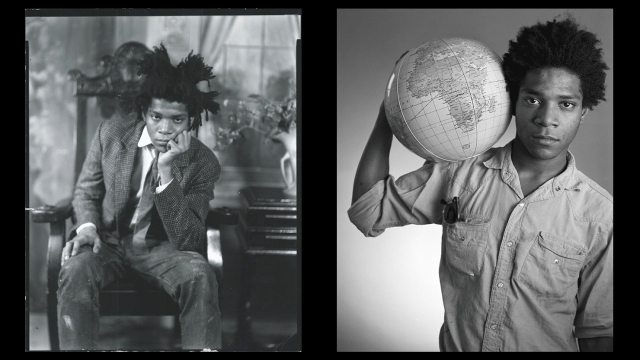He’s not just the Black artist whose painting sold atauction for $110 million. Jean-Michel Basquiat is a quintessential American artist who drew inspiration from his surroundings and people.
That’s the message that his sisters hope will resonate as the Jean-Michel Basquiat "King Pleasure" exhibition opened this month in Los Angles. Lisane Basquiat and Jeanine Heriveaux, who are charged with the late artist’s estate, curated the show that drew sold-out crowds during its run last year in New York City.
“What we wanted was really to walk people through the story and trajectory of Jean Michel’s life and his career,” Lisane Basquiat said. “For us, it was thinking about the different chapters of his life and then finding artworks that we felt would be a good representation of those times.”
Like the New York exhibition, the Los Angeles show spans several rooms at The Grand LA. In addition to more than 200 pieces of art, “King Pleasure” takes a peek into Basquiat’s life in Brooklyn, bringing the family’s living room and kitchen into the exhibit. It is also a look at life in New York City in the 1970s and 1980s, with a recreation of the nightclub Palladium, where art aficionados can lounge while enjoying the paintings.
Born and raised in Brooklyn to Haitian immigrant parents, Basquiat is known for his signature street art. For Haitian immigrants, art is not a professional field, Heriveaux said. The proper professions were doctor, engineer and lawyer.

Basquiat rose to fame in the late 1970s as part of the graffiti duo SAMO. By the early 1980s, his paintings were being exhibited internationally.
“King Pleasure” is the title of a painting created by Basquiat in 1987 and the name of a bartender turned jazz vocalist whose 1952 hit, “Moody’s Mood for Love,” pushed the vocalist to fame. Basquiat died shortly thereafter, in 1988, at age 27 from an accidental drug overdose.
Since his passing, Basquiat’s work has soared in value, with a 1982 painting called "Untitled" featuring a black skull, selling for $110.5 million.
Moving the exhibition to Los Angeles was a natural decision due to the time the artist spent there in the early 1980s, Lisane Basquiat and Heriveaux said. Everything was source material for the artist, and Los Angeles was inspiration for him, drawing energy from the people and the culture, Lisane Basquiat said.
“It was an opportunity for him to leave the hustle and bustle of the northeast, New York, and to come here and be in a different environment,” Lisane Basquiat said.
There is also an artistic Los Angeles connection: two paintings created at Basquiat’s Venice studio are part of the exhibition.
The show is deeply personal, intertwining Basquiat’s art with personal items as well as recreating scenes from the eras in which he lived.
Miriam Perez, a Brooklyn native who attended the “King Pleasure” show in New York, felt an immediate connection.
“From my school days, I recall taking an art appreciation class and the number one lesson I learned was art was to be primarily appreciated for its beauty or emotional power,” Perez said. “I definitely get that from Jean- Michel Basquiat’s work.”
SEE MORE: How do we value art?
Trending stories at Scrippsnews.com



